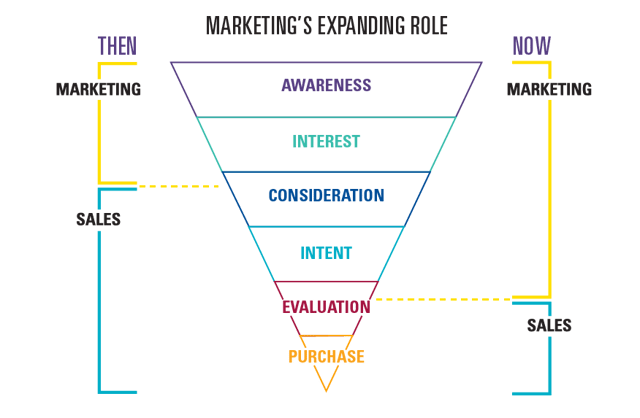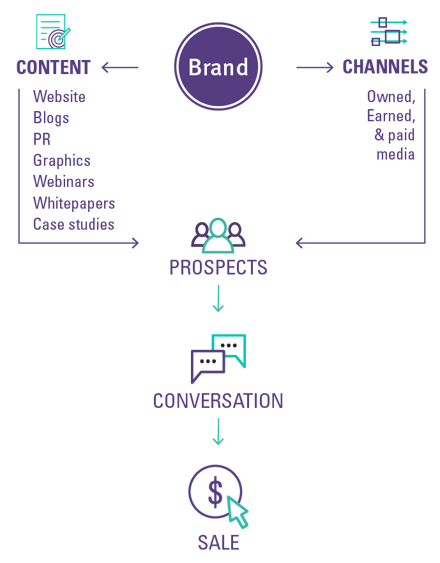
There was a time when marketing in financial services existed solely to support sales. If the sales team was working a booth at an event, the marketing folks would create a fancy brochure for them to hand out. Sales may have driven the materials and the message at one point, but this is no longer the case. The two disciplines still work together, but marketing takes the wheel in driving new client acquisition and prospect engagement, making sales the support function.
The job of the marketer is to reach prospects directly and clearly define how they offer solutions in a non-salesy way. The goal is to provide high-quality client experiences, attract new prospects and build brand awareness.

Content Communicates the Brand and Drives Engagement
Marketers in the financial arena have an arsenal of digital tools that didn’t exist even 10 years ago, which enables them to directly target and engage prospects and clients. CMS (content management systems), CRM (client relationship management) and MAP (marketing automation programs) now allow the marketing team to digitize the traditional sales relationship.
Financial services marketers are now focused on enhancing the user experience and they measure the success of their performance through client satisfaction. As such, having a clearly defined brand is more important than ever. It’s not enough to just have a logo and a website. The brand should be communicated through interesting content like infographics, videos, company blogs and other thought leadership pieces, e-books and email campaigns. Getting rid of the traditional manual processes has freed up valuable time that is better spent creating content and brainstorming PR strategies.

Data as a Roadmap
The shift in technology has put analytics at the forefront of marketing—especially since marketers are increasingly responsible for driving revenue and business growth. This places a higher importance on reporting metrics that prove those results.
Data should not just be looked at as a measure of how well a campaign meets its goals. It can also be a guide for shaping future strategies to engage different customer segments. If you’re implementing an email campaign and not getting the expected open and click-through rates, take that information and use A/B testing to see which type of email format works best with the category of recipients you’re trying to reach. In this case, you’re not just reporting the data, but using it to evolve the next campaign.
The New Marketing Team
Financial services firms should adopt a new way of thinking when it comes to their team approach. Modern marketing departments erase the divide between “traditional,” “digital” and “social” channels and instead focus on the primary roles of each team member. The thinkers focus on strategy and analytics, the feelers are great at engaging customers and the doers create the content that supports the engagement.
Nobody is working in a silo anymore. The community manager is working together with the content creators so they can be informed and help strategize what will be pushed out on social media. The event networker is involved in the strategy brainstorm since they are the ones talking directly with prospects.
Financial services marketers should embrace marketing’s changing role and celebrate its front-and-center position to actively engage clients and prospects with a strong brand message—and the content to back it up.





Let’s Connect
Ready to build, grow, manage and protect your brand? Complete the form below to discuss how we can help.